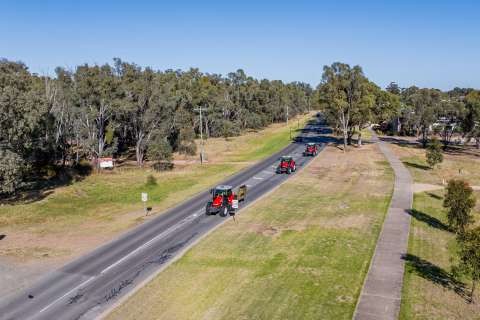CO2CRC announced today that it has made a final investment decision to proceed with its $45 million Otway Stage 3 Monitoring and Verification Project at the Otway ³Ô¹ÏÍøÕ¾ Research Facility in south-west Victoria. The decision follows the successful finalisation of all project-related technical and scientific work programs, operational arrangements, regulatory approvals and funding.
The project will develop sub-surface storage technologies which reduce the cost and environmental footprint of long-term CO2 storage monitoring. At the same time, the project will provide regulators and communities with ongoing confidence that CO2injected deep underground is permanently contained within the bounds of the storage reservoir in large scale CCS operations. Technical and scientific work programs are expected to be complete by June 2022.
The project is jointly funded by the Commonwealth Government’s Education Investment Fund (EIF), COAL21 through ANLEC R&D, BHP and the Victorian State Government. It involves the drilling of five new wells equipped with the latest technologies in fibre optics sensing and sub-surface gauges. Through the injection of 15,000 tonnes of CO2, CO2CRC will test and validate subsurface monitoring technologies including seismic data acquisition techniques, pressure tomography imaging and the closely related technique of pressure inversion. The on-demand, permanent monitoring solution will enable faster acquisition and continuous transmission and analysis of plume monitoring data. This will significantly reduce the frequency of the conventional, surface land or offshore monitoring surveys currently required during the injection and post-injection phases of a CCS project. While detailed techno-economic studies will be performed as part of the project, initial estimates show a cost saving of up to 75 percent of monitoring costs over traditional monitoring technologies.
Chairman of the CO2CRC Board, Martin Ferguson OAM, welcomed the continued government and industry support for funding the project. He said the decision to proceed was a sign of confidence in CCS technologies.
“It has been tremendous to secure great financial support from the Commonwealth and Victorian Governments, COAL21 through ANLEC R&D and BHP. Australia has the potential to develop world-class CCS hubs. The outcomes of this research project, including the new technologies and techniques will substantially reduce the cost of long-term CO2storage monitoring activities and thereby play a major role in promoting the wider deployment of CCS,” Mr Ferguson said.
David Byers, CEO of CO2CRC, said the Otway Stage 3 Project brings together Australian and international CCS researchers, industry, government and regulators in a unique collaboration.
“Industry and researchers have worked closely over the past four years to develop the intended scientific objectives and technological applications from the project. The investment in infrastructure will transform the Otway ³Ô¹ÏÍøÕ¾ Research Facility into the best CO2 storage testing facility in the world. It will mean Australia is well-placed to lead efforts to dramatically cut the cost of CCS and thereby accelerate its global deployment,” Mr Byers said.
“In addition to great support from our funding parties, CO2CRC has been fortunate to access intellectual input from Australia’s leading scientific researchers and prominent companies in the global oil and gas industry. The scientific objectives and intended technological applications will therefore truly reflect industry needs.
“CCS is the only feasible technology that can deliver deep emissions reductions in many industrial processes that are vital to the global economy, such as LNG, steel, cement and chemicals production. CCS can also be applied to coal and gas fired power plants, providing dispatchable low emissions generation capacity to complement the increased deployment of intermittent renewables, and in the production of low emissions hydrogen for heat and transport.
“Forty years ago, over 80 percent of the world’s energy was supplied by oil, gas and coal. Last year, oil, gas and coal still supplied more than 80 percent of the world’s energy. The global energy mix is unlikely to shift easily or quickly from the fossil energy sources that currently dominate, given their huge scale,” Mr Byers said.
“Technologies like Carbon Capture and Storage (CCS) are commercially viable and ready to play a vital role in delivering cost-effective emissions reductions by transforming the global energy system without trashing it.
“It is vital we get it right. The International Energy Agency points to the need for CCS to contribute to 14 percent of global emission reductions if climate change is to be kept to no more than two degrees by 2060,” he said.








